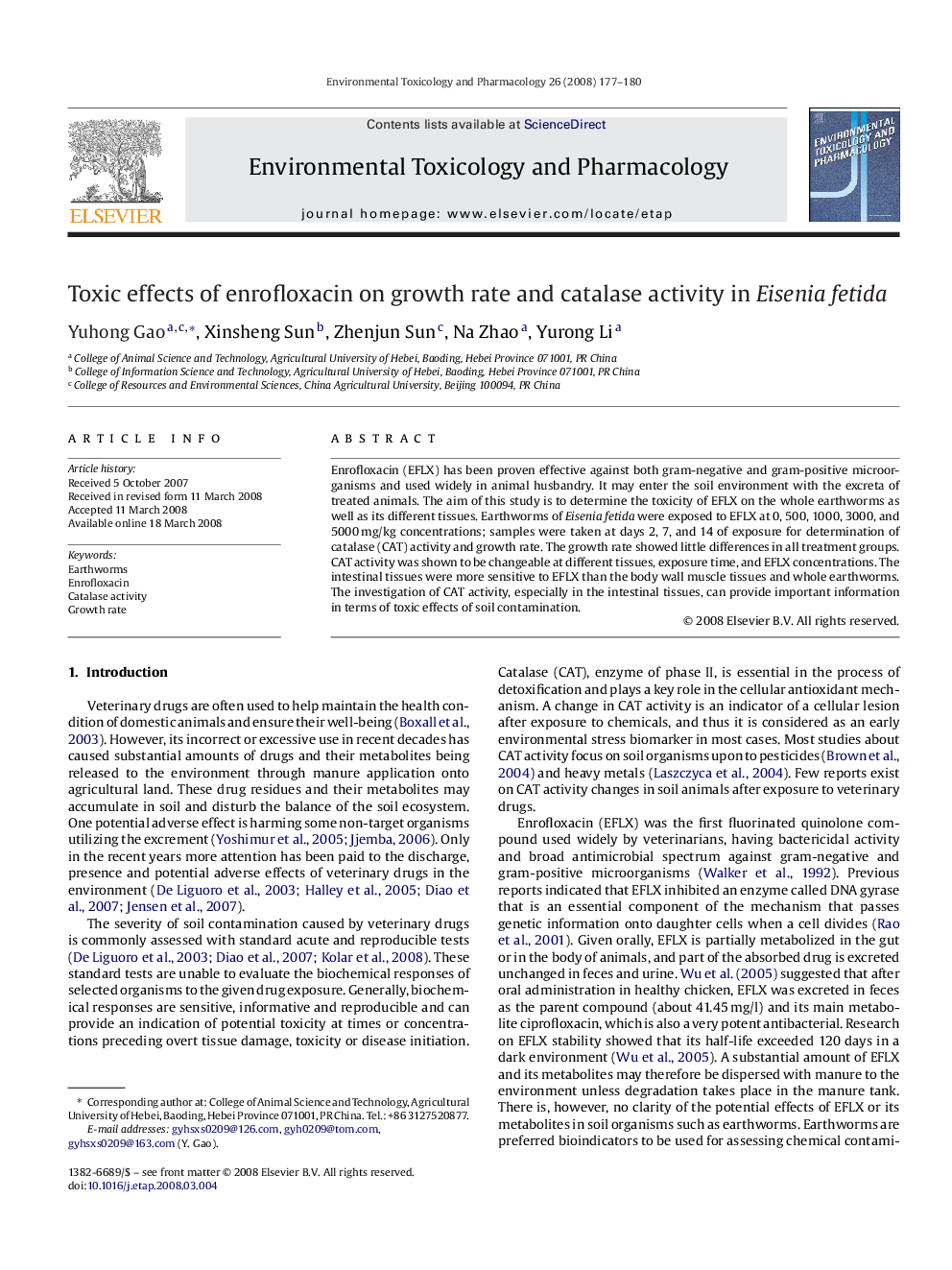| Article ID | Journal | Published Year | Pages | File Type |
|---|---|---|---|---|
| 2584080 | Environmental Toxicology and Pharmacology | 2008 | 4 Pages |
Enrofloxacin (EFLX) has been proven effective against both gram-negative and gram-positive microorganisms and used widely in animal husbandry. It may enter the soil environment with the excreta of treated animals. The aim of this study is to determine the toxicity of EFLX on the whole earthworms as well as its different tissues. Earthworms of Eisenia fetida were exposed to EFLX at 0, 500, 1000, 3000, and 5000 mg/kg concentrations; samples were taken at days 2, 7, and 14 of exposure for determination of catalase (CAT) activity and growth rate. The growth rate showed little differences in all treatment groups. CAT activity was shown to be changeable at different tissues, exposure time, and EFLX concentrations. The intestinal tissues were more sensitive to EFLX than the body wall muscle tissues and whole earthworms. The investigation of CAT activity, especially in the intestinal tissues, can provide important information in terms of toxic effects of soil contamination.
